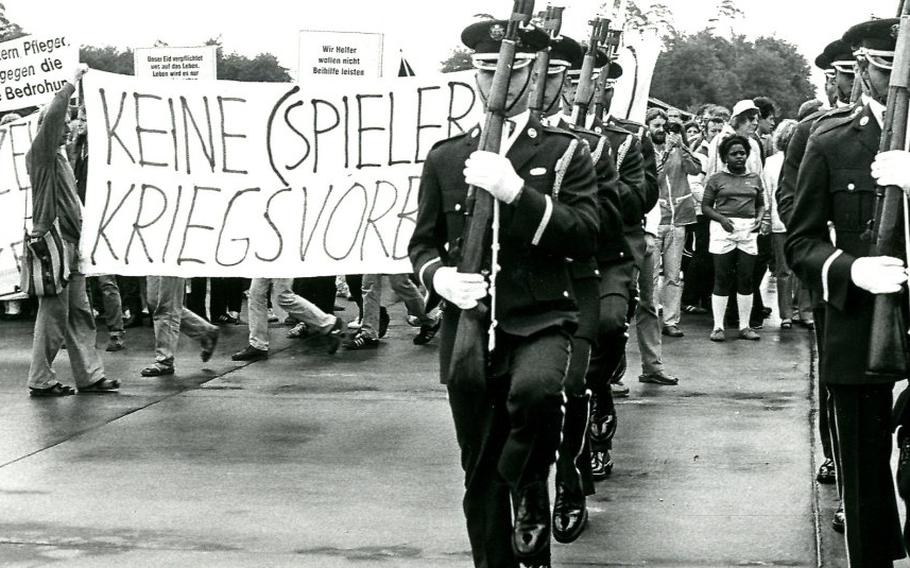
Docu Center Ramstein’s latest exhibit, “1983 Cold War and Hot Autumn,” explores the widespread protests and demonstrations in response to the NATO Double-Track Decision and the deployment of Pershing-II missiles in 1983. (Docu Center Ramstein)
The Docu Center Ramstein is slated to unveil its latest exhibit, “1983: Cold War and Hot Autumn,” shedding light on a pivotal chapter in German post-war history.
The exhibit, opening at 2 p.m. on Saturday and running until Aug. 18, explores the widespread protests and demonstrations in response to the NATO Double-Track Decision and the deployment of Pershing-II missiles in 1983.
The NATO Double-Track Decision of 1979, a key Cold War strategy according to the alliance, combined diplomatic negotiations with a plan to deploy 572 American nuclear missiles in Western Europe, including West Germany, if the Soviet Union did not reduce its SS-20 missile arsenal.
This dual approach aimed to pressure Soviet decision makers into arms control talks and led to widespread protests across Europe, setting the stage for the historic Intermediate-Range Nuclear Forces Treaty, signed by U.S. President Ronald Reagan and Soviet General Secretary Mikhail Gorbachev in 1987.
Focusing on the tumultuous period from September to November 1983, the exhibition features posters, flyers, and photographs documenting the peace movement’s resistance at military sites across Rheinland-Pfalz, including protests and blockades in front of the gates at Sembach, Ramstein, Miesau military posts.
Docu Center Ramstein
Address: Schernauer Strasse 46, Ramstein-Miesenbach. Near the Azur swimming pool, across the street from the Reichswald-Gymnasium.
Hours: The exhibit is open daily from 2-5 p.m., except Mondays.
Cost: Free
Information: Online at dc-ramstein.de; info@dc-ramsteinde; +49 6371-838-005. Most displays are in English and German. Guided tours are available upon request.
May 22, 2024 12:13